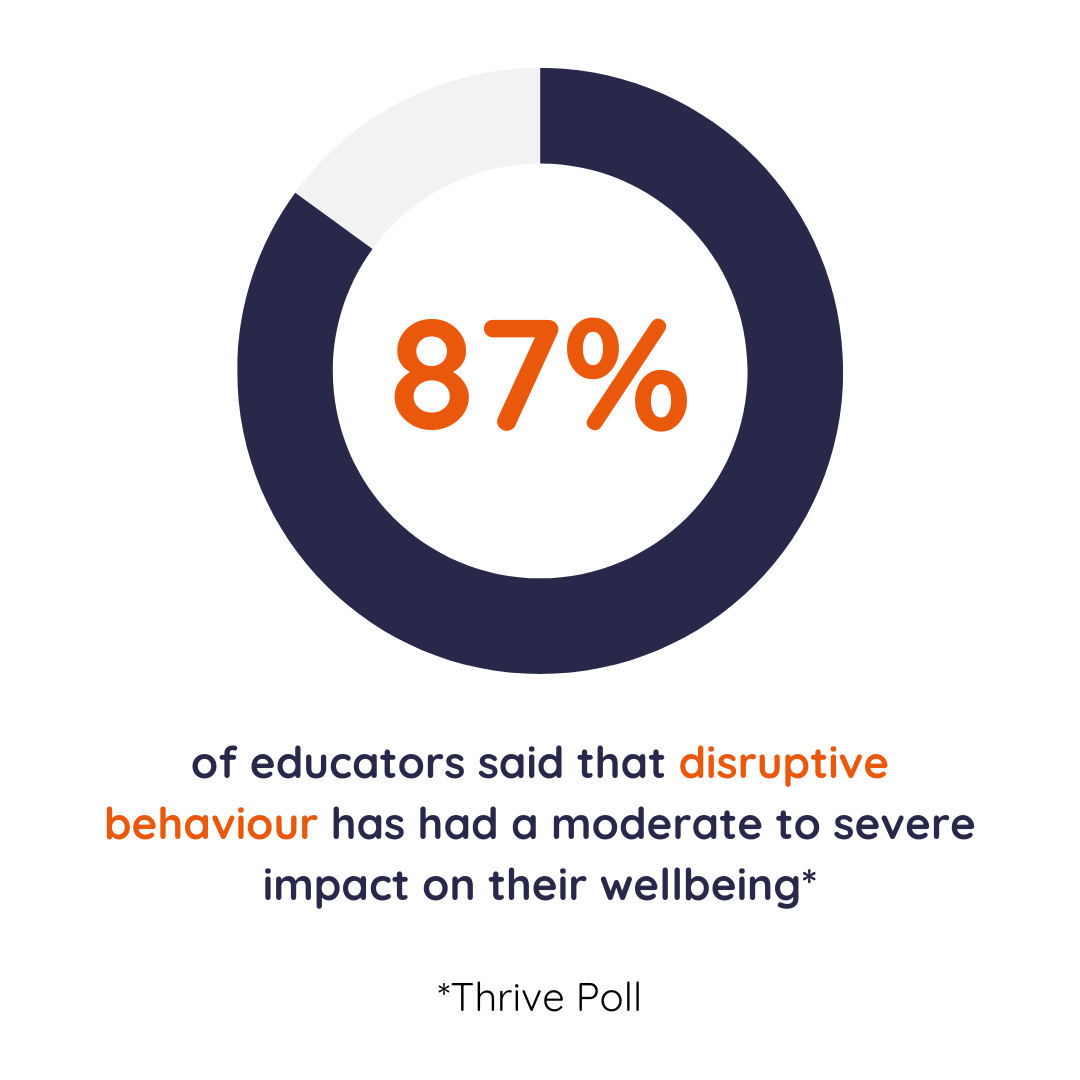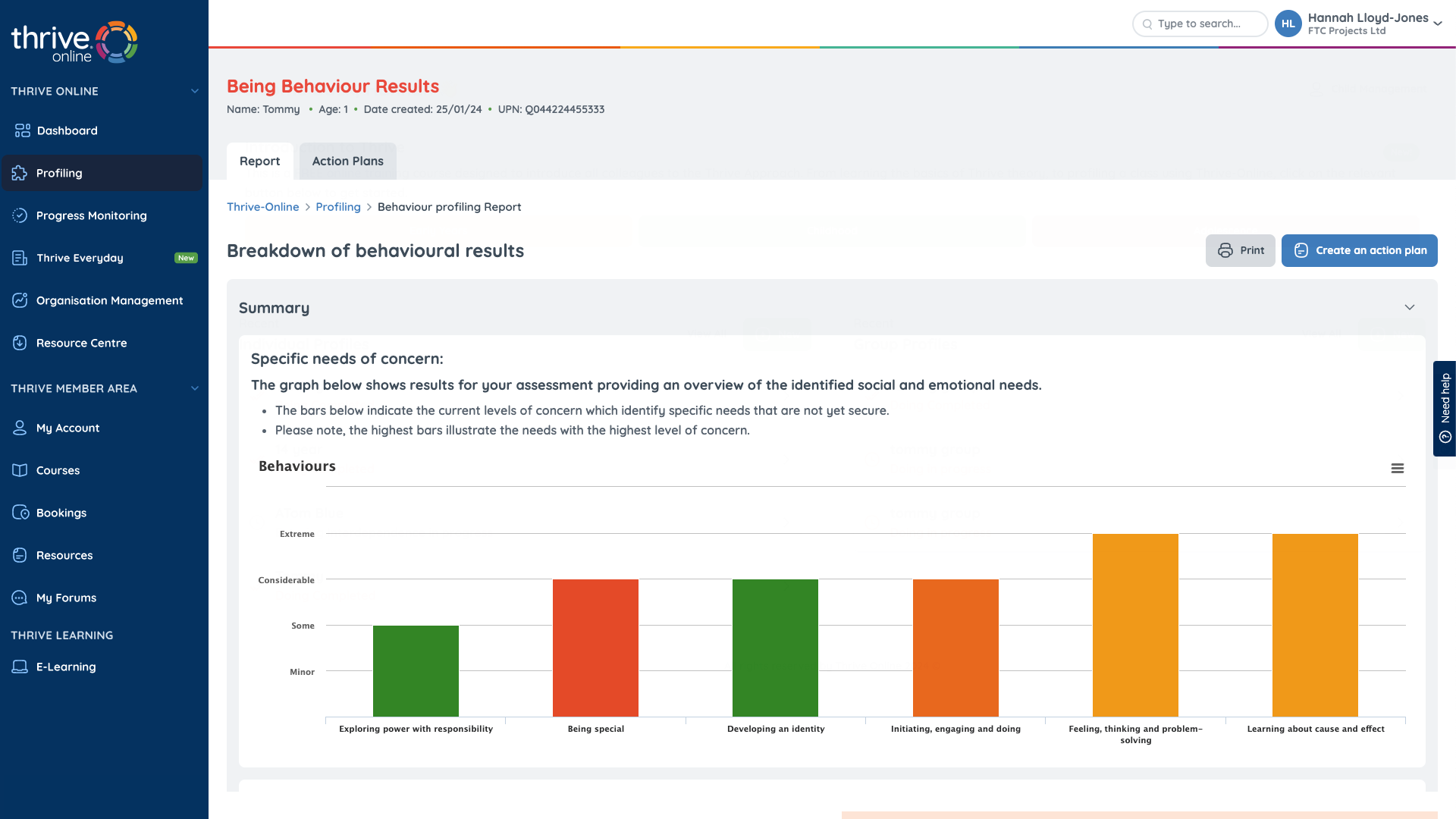Managing pupil behaviour in the classroom can be a challenging task. Disruptive behaviour can not only affect the learning environment but also impact the overall academic performance of pupils and the wellbeing of staff. However, with the right strategies and techniques, you can improve classroom behaviour and create a positive learning environment for your pupils.
In this article, we will discuss effective ideas for behaviour management in the classroom that can help you improve pupil behaviour and create a conducive learning environment.
Why is behaviour management in the classroom important?
Effective classroom behaviour management is crucial for creating a positive learning environment and minimises lost teaching time spent dealing with disruptive behaviour.
It helps maintain discipline, promotes a sense of responsibility among pupils, and improves academic performance. In addition, it cultivates a supportive environment for teachers and classroom staff, contributing to their wellbeing and job satisfaction.

What causes disruptive behaviour?
Disruptive behaviour can be triggered by various factors affecting a child or teenager's mental state. These factors may include past trauma, experiences of bullying, challenges within their home environment, or unaddressed social and emotional needs. It's crucial to grasp the root causes of such behaviour to respond appropriately. Establishing clear behaviour and bullying policies and implementing a whole school approach to mental health and wellbeing can be effective measures to support pupils.
Effective classroom behaviour management ideas
Now that we understand the root causes behind disruptive behaviour, let's explore some effective strategies to improve behaviour in the classroom.
Establish clear expectations
One of the most crucial steps in managing behaviour in the classroom is setting clear expectations. Pupils need to know what is expected of them in terms of behaviour, academic performance, and classroom rules.
Take the time to establish clear rules at the start of the academic year and the consequences for breaking them. Make sure to communicate these expectations to pupils and consistently enforce them.
Keep in mind that children and young people benefit from a clear structure (containment) within which to learn.
Develop positive relationships
Developing positive relationships with your pupils is fundamental to fostering positive behaviour in the classroom. Pupils are more likely to comply with your rules and expectations when they feel respected.
Adopt the stance of PACE (Playfulness, Acceptance, Curiosity and Empathy) supported by the use of the VRFs (Vital Relational Functions) to build a positive relationship with the child or young person, enabling them to learn to regulate their own emotional states.
Learn more about PACE, VRFs and developing a relational approach with your pupils by signing up for the Positive Behaviour Management course.
Use positive reinforcement
Positive reinforcement is a powerful tool for behaviour management in the classroom. Instead of focusing on negative behaviour, try to catch pupils exhibiting positive behaviour and praise them for it.
This can be as simple as saying "great job" or giving a sticker or token. Positive reinforcement can help pupils feel recognised and motivated to continue exhibiting positive behaviour.
Encourage pupil participation
Pupils are more likely to engage in positive behaviour when they feel involved and valued in the classroom. Encourage pupil participation by asking for their opinions, giving them responsibilities, and involving them in decision-making.
This can help pupils feel a sense of ownership and responsibility for their behaviour in the classroom.
Use visual aids
Visual aids can be a helpful tool to help you deal with challenging behaviour in the classroom. You can use posters, charts, or even behaviour charts for the classroom visually representing expectations and consequences.
Visual aids can serve as a reminder and help them understand the consequences of their behaviour.
Implement a reward system
A reward system can be an effective way to motivate pupils to exhibit positive behaviour. You can create a point system where they earn points for positive behaviour and can redeem them for rewards.
A reward system can also help pupils understand the connection between their behaviour and consequences.
Promote intrinsic motivation by rewarding the process of learning (behaviours for learning) rather than the output of an activity.
Address negative behaviour promptly
It's essential to address negative behaviour promptly to prevent it from escalating. When a pupil exhibits disruptive behaviour, address it calmly and privately. Explain why the behaviour is not acceptable and discuss the consequences. Aim for resolution and learning during these discussions.
It's also crucial to follow through with consequences consistently to show pupils that their behaviour has consequences.
Use sanctions only as a form of appropriate, proportionate and positive intervention, and keep in mind that any sanction used is to resolve rather than escalate a situation whilst preserving the dignity of all involved.
Use positive language
The language you use in the classroom can have a significant impact on pupil behaviour. Instead of using negative language, try to use positive language to address behaviour.
For example, instead of saying "Stop talking," try saying "please raise your hand if you have something to say." This can help pupils feel respected and motivated to exhibit positive behaviour.
Use of body language
Remember the power of body language and eye contact. Use positive body language to convey calmness and confidence, and maintain eye contact to show attentiveness and respect. These simple yet effective techniques can help foster a calmer classroom.
Involve parents and guardians
Parents and guardians play a crucial role in shaping pupil behaviour. Keep them informed about classroom expectations and consequences and involve them in addressing any behaviour issues.
You can also ask for their support in reinforcing positive behaviour at home. This can help create consistency and reinforce positive behaviour in the classroom.
Implement consistency across the school
Consistency across the whole school is key to positive behaviour management. Although a whole school approach can take longer to embed, the EEF Improving Behaviour in Schools report states that behaviour programmes are more likely to impact attainment levels if implemented at a whole school level.
Remember, implementing an effective behaviour management strategy is a continuous process, and it's essential to consistently reinforce expectations and consequences.
Are you a school leader trying to navigate disruptive behaviour in your school? Watch our free Thrive in Action webinar recording: ‘Navigating disruptive behaviour: Strategies for school leaders’.
Use targeted interventions
The EEF Improving Behaviour in Schools report advises that universal behaviour systems won’t meet the needs of every pupil. For those with more challenging behaviour, interventions should be adapted to the individual, with staff trained in specific strategies to provide the right support.
How does social and emotional development impact pupil behaviour?
Social and emotional development plays a significant role among children and young people, impacting their mental health and behaviour in schools. The ability to regulate emotions, communicate effectively, and form positive relationships are essential skills for navigating social interactions in school settings.
When pupils struggle with aspects of their social and emotional development, such as managing their emotions or understanding others' perspectives, they may resort to disruptive behaviours to express their frustrations or seek attention.
In addition, difficulties in forming meaningful connections with peers or experiencing social isolation can exacerbate disruptive behaviour. Therefore, fostering a supportive and inclusive school environment that prioritises social and emotional learning and supports mental health in schools can help mitigate disruptive behaviours by equipping pupils with the necessary skills to navigate social interactions and manage their emotions effectively.
Want more guidance on how to manage behaviour in the classroom? Our Positive Behaviour Management short course provides teachers and classroom staff with insights into the root causes of behaviour and effective management strategies.
Classroom colleagues trained in 'Positive Behaviour Management' with access to a Thrive-Online subscription can access the Behaviour Profiling functionality with access to tailored strategies and activities for managing persistent low-level disruptive behaviour.
Additionally, senior leaders should consider implementing a whole school approach to mental health and wellbeing, which can significantly support pupils' social and emotional wellbeing, leading to improvements in behaviour, attendance, and academic achievement. A whole school approach is a combination of individual and whole staff training which ensures everyone understands the principles and language of Thrive, as well as a subscription to Thrive-Online, a tool to evaluate your pupils’ social and emotional skills, create targeted action plans to support mental health, and track progress over time.
Click here to schedule a Discovery Call with your regional expert to find out how a whole school approach could help your setting manage behaviour and support staff. Designed to fit in around your schedule, these free 30-minute conversations via Teams give you a chance to have your questions answered and decide if our service is a fit for your needs.





_680.jpg)
